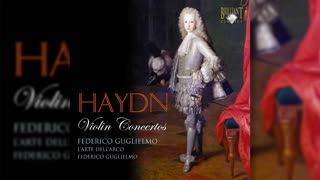Franz Joseph Haydn Symphony №88 in G Major
#ClassicalMusic #Haydn #SymphonyNo88 #GMajor #OrchestralComposition #ClassicalComposer #MusicHistory #ClassicalEra #MusicalAnalysis #ClassicalSymphony
Publication date 1951
Arturo Toscanini; NBC Symphony Orchestra
The world of classical music is adorned with numerous masterpieces, and among them stands the remarkable "Symphony No. 88 in G Major" composed by Franz Joseph Haydn.
Written in 1787, Symphony No. 88 belongs to Haydn's middle period, a time of great artistic growth and innovation. Haydn's patron, Prince Nikolaus Esterházy, commissioned the symphony, and it was performed at the Esterházy court in Eisenstadt, Austria. This period marked a transition from the Baroque era to the Classical era, with composers embracing new forms and styles.
Symphony No. 88 follows the traditional four-movement structure commonly found in classical symphonies of the time.
1. Adagio - Allegro: The symphony opens with a majestic and grandiose introduction, followed by an energetic and lively allegro section. The movement showcases Haydn's mastery in developing thematic material and creating a sense of anticipation.
2. Largo: The second movement shifts to a slower tempo, offering a serene and introspective atmosphere. Haydn demonstrates his ability to create beautiful melodies and evoke emotional depth through expressive harmonies.
3. Menuetto: This movement presents a graceful and elegant minuet, a traditional dance form of the time. It features a charming melody and a lively, rhythmic character, providing a delightful contrast to the previous movement.
4. Finale: The symphony concludes with a vibrant and spirited finale. Haydn effortlessly combines light-heartedness and intensity, showcasing his inventive use of orchestration and thematic development. The movement culminates in a thrilling and triumphant conclusion.
Haydn's Symphony No. 88 exhibits a rich tapestry of musical elements that contribute to its enduring appeal. These include:
Haydn's gift for crafting memorable melodies is evident throughout the symphony. From the majestic opening theme to the delicate motifs, each melody is carefully crafted to captivate the listener's attention.
Haydn skillfully navigates various harmonic progressions, using unexpected chord changes and modulations to create tension and release. This harmonic adventurousness adds depth and complexity to the overall musical experience.
Known for his expertise in counterpoint, Haydn integrates contrapuntal elements, such as canons and fugues, into the symphony. These intricate textures demonstrate his mastery of polyphonic composition.
Haydn's orchestration in Symphony No. 88 showcases his ability to manipulate instrumental colors and textures. From the delicate interplay of strings to the dramatic brass and woodwind flourishes, the symphony offers a rich and dynamic sonic landscape.
Conclusion:
Franz Joseph Haydn's Symphony No. 88 in G Major stands as a testament to his genius as a composer and his significant contributions to classical music. Its historical context, well-crafted structure, and masterful use of musical elements make it an enduring masterpiece. The symphony continues to enchant audiences worldwide, reminding us of the timeless beauty and power of classical music.
You have the opportunity to support the channel https://destream.net/live/RadSiarAl/donate
-
 1:51:34
1:51:34
BurkholderMedia
3 years agoFranz Joseph Haydn
29 -
 59:04
59:04
Born Again Prayer Warrior Agenda / BAPWA
7 months agoFRANZ JOSEPH HAYDN - Violin Concertos
44 -
 16:27
16:27
Classical music_Music Inspiration
1 year agoJohann Michael Haydn Symphony In C Major
10 -
 4:51
4:51
goldenflameclassic
1 year agoJoseph Haydn Symphony no 94 in G 'Surprise', H I 94 III
-
 7:09
7:09
goldenflameclassic
1 year agoJoseph Haydn Symphony no 94 in G 'Surprise', H I 94 I
-
 5:43
5:43
goldenflameclassic
1 year agoJoseph Haydn Symphony no 94 in G 'Surprise', H I 94 II
4 -
 3:48
3:48
goldenflameclassic
1 year agoJoseph Haydn Symphony no 94 in G 'Surprise', H I 94 IV
10 -
 10:22
10:22
goldenflameclassic
1 year agoJoseph Haydn Cello Concerto no 1 in C major, Hob VIIb 1 I Moderato
2 -
 3:42
3:42
goldenflameclassic
1 year agoJoseph Haydn Piano Sonata in F major, Hob XVI 23 I Allegro moderato
1 -
 6:20
6:20
Gnostic Library
7 months ago💥 JOHANNES BRAHMS ❯ Symphony No. 3 in F Major ❯ 432 Hz 🎶
26